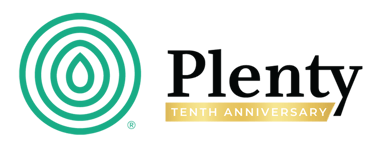Strengthening Your Fundraiser Community, Part II
A couple of weeks ago we shared four rather conceptual tips on how your organization can strengthen the activation and retention of your fundraiser community. As we mentioned in that post, too often fundraising is short-sided, detached from the complex needs of the communities we serve and the communities that support us. So this week, we are continuing the conversation and sharing a unique methodology that explores the nature and needs of the community itself, in order to create authentic community engagement.
In taking some time to assess the value of listening, asking questions, building trust, and maintaining patience in our last article, we learned how to combat the inherent difficulties of building healthy constituent communities. Though still conceptual, in this second part we intend to provide insights that are somewhat more tactical, and help frame the day-to-day operational strategy.
So in continuing on with our series, here are four more tips for growing your fundraiser community:
1. Use a message of hope.
Too often we encounter leaders who don’t believe their mission is possible. Our response – find a new job. We say this not to be cold, but to be authentic about what the world needs, and what our communities deserve.
At Plenty we say, “Hope needs help.” The world is riddled with pain, confusion, and inequity – we all know this to be true. But as leaders, it is our duty to light the torch and carry it through the darkness into a more hopeful place. If we are to be the patrons of a better world, we must first believe that it is possible, and second, that we are capable.
Compassion is our instinct, and sympathy, our strongest and most innate emotional capacity. People are, by nature, drawn to missions that inspire – visions that reject defeat, and climb to new heights in the pursuit of something truly empowering.
2. Maintain a balanced brand.
Continuing on the above, our brands should be both rooted in our present reality and in our aspirations to unlock possibilities far greater. We come across many organizations that do an excellent job of outlining the former, but fall short in the latter.
If you only focus on the piercing statistics that paint a heartbreaking portrait, then your painting is incomplete. Yes, the numbers matter, and facts are undoubtedly integral to what we do. However, the more important questions are, what are we doing about it? How are we stepping in to find a cure for cancer? To end hunger? To rid the world of poverty?
There is great power in the words we choose. A balanced brand means a stronger community.
 3. Leadership = followership.
3. Leadership = followership.
In all that we do with and for our organizations, we should remember that leadership, more often than we realize, is about learning how to follow. This may be a contentious thought for some. But think about it, how can we be truly effective leaders without first learning how to listen, understand, empathize, etc.?
At Plenty, we’re in the business of helping our clients share and strengthen their social missions for the greatest possible good. We guide our clients through a growth process that is directly informed by the needs of their constituents. Essentially, we use our skills in business development and strategy to enrich our clients’ awareness of self and community. As we challenge them to push harder and to learn more about themselves, we follow them into this awareness, offering support and counsel along the way.
Leadership works best when we first heed to the unique voices and the nuanced needs of the communities we serve. Leading and following is not an “or”, but an “and.” It is possible, and we would argue, necessary, that the two work simultaneously to inform one another.
4. It starts within.
As with almost anything related to business development, true community starts within. It begs the question; do you care as much about your home as you do your neighborhood? We’ve noticed that most of the organizations that have a strong external community also have a strong internal community. This would suggest that external programs, in many ways, are a reflection of internal operations.
Many organizational leaders are overtly frugal with their finances and their time, compromising the quality of care they provide to their own staff as a method of stretching both. But this is counterintuitive and counterproductive, as it usually results in a lack of both the internal and the external culture. There should be no surprise here, as they are related. There is a good deal of data to support that when an internal team feels happy, empowered and supported, the business thrives. The inverse is also true.
So when you are building up your community, begin within your own entity. Learn from the internal trials and use them as a catalyst to further nurture the external community. Practice innovation in the workplace. Make sure your team feels respected, recognized, valued. Allow opportunities for growth, reflection, expression. If there is an energy you wish to see in your constituent community, the best place to start is within.
We hope you found these tips helpful, and that they’ve offered a new perspective in the development and engagement of your fundraiser communities.
Share this
You May Also Like
These Related Stories

Strengthening Your Fundraiser Community, Part 1

Four Reasons You Need A P2P Community



No Comments Yet
Let us know what you think